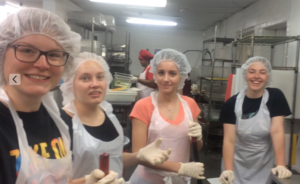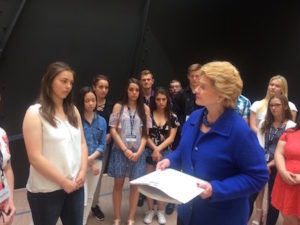In today’s digital age, data is at the heart of every successful marketing strategy. Leveraging data allows marketers to understand customer preferences, track campaign effectiveness, and make informed decisions that drive results. As data collection methods become more advanced and accessible, businesses are better equipped than ever to shape strategies that resonate with their audiences and yield high returns. This article explores how data is revolutionizing marketing, key types of data that marketers rely on, and how data-driven insights can improve every stage of the marketing process.
Why Data is Essential in Modern Marketing
Gone are the days when marketers relied on intuition or broad assumptions about consumer behavior. Today, data provides a clear, actionable roadmap for reaching customers with the right message, on the right platform, and at the right time. The advantages of data-driven marketing include:
Personalization: Data allows brands to tailor content, products, and experiences to meet individual customer needs, enhancing engagement and loyalty.
Performance Measurement: Marketers can track every click, view, and conversion to measure the effectiveness of their campaigns, ensuring resources are allocated to the strategies that work best.
Customer Retention: By analyzing data from customer interactions, brands can identify pain points and improve customer satisfaction, leading to increased loyalty and retention.
Optimization and Scalability: Data allows companies to test various strategies, optimize them for better performance, and scale successful tactics for larger audiences.
In essence, data transforms marketing into a measurable science, enabling teams to optimize and iterate based on real customer feedback and behavior.
Types of Data in Marketing
There are three main categories of data that drive marketing strategies: demographic, behavioral, and transactional data. Each offers unique insights into customer habits, preferences, and potential buying triggers.
1. Demographic Data
Demographic data provides essential information about the target audience’s age, gender, income, education, and location. This type of data is the foundation of market segmentation, helping businesses group audiences with similar characteristics for more targeted campaigns.
Example: A cosmetics brand targeting women aged 18-24 will structure its campaigns differently than one targeting women aged 40-55. Understanding these differences allows brands to adjust language, visuals, and messaging to resonate better with each segment.
2. Behavioral Data
Behavioral data tracks how customers interact with a brand, including browsing habits, purchase history, and engagement on social media. By analyzing behavioral data, marketers gain insights into customer interests, preferences, and potential buying triggers, enabling them to anticipate customer needs and personalize campaigns.
Example: An e-commerce site may track how often a user visits a specific product page without purchasing. This information can be used to trigger personalized retargeting ads or send a promotional email with a discount code to encourage conversion.
3. Transactional Data
Transactional data involves any records of purchases or interactions with a business. This data is valuable for understanding purchase frequency, average transaction size, and product preferences.
Example: A clothing retailer can use transactional data to identify customers who frequently purchase specific types of clothing, such as activewear. By analyzing this trend, the retailer can create targeted campaigns promoting new activewear collections or exclusive discounts for loyal customers in that segment.
How Data Shapes Key Stages of the Marketing Process
Data not only aids in understanding customers but also informs every step of a marketing campaign. Here’s how data is used at different stages of the marketing process:
1. Market Research and Audience Segmentation
Data collection begins with market research. Brands can use data from surveys, focus groups, and online analytics to identify customer demographics and psychographics. Audience segmentation allows businesses to group customers based on shared characteristics or behaviors, making it easier to create targeted marketing messages that appeal to each segment.
Example: A fitness app may use demographic data to segment users into beginner, intermediate, and advanced fitness levels, creating tailored content and workout plans for each group.
2. Content Creation and Personalization
With audience insights, brands can develop content that speaks directly to the needs and preferences of each segment. Personalization, driven by behavioral data, allows brands to craft tailored emails, product recommendations, and social media posts that resonate more deeply with individual customers.
Example: A streaming service might use viewing history to recommend similar shows, creating a highly personalized experience that encourages continued engagement.
3. Campaign Execution and Targeting
Data also enhances targeting capabilities, allowing marketers to serve ads to specific demographics, geographic areas, or behavioral groups. Platforms like Google Ads and Facebook Ads rely heavily on data to deliver personalized ads to users who are most likely to convert.
Example: A travel agency may target individuals who have recently searched for vacation destinations, using behavioral data to serve ads for special travel deals.
4. Performance Measurement and Optimization
Data collection doesn’t stop once a campaign goes live. Marketers continuously analyze metrics to understand which elements are performing well and which need adjustment. This stage is crucial for A/B testing, optimizing ad placements, and refining strategies based on real-time performance data.
Example: If a campaign’s CTR is low, marketers might test different ad copy or visuals, using data insights to make adjustments and improve results.
5. Customer Retention and Loyalty
Finally, data is essential for nurturing relationships with customers post-purchase. Transactional data reveals customer buying patterns, while feedback and engagement data highlight opportunities to enhance the customer experience. Loyalty programs often rely on data to personalize rewards and encourage repeat purchases.
Example: An online retailer can use data to identify customers who haven’t made a purchase in a few months, sending them a special offer to re-engage and encourage another purchase.
Real-World Examples of Data-Driven Marketing Success
Several companies have successfully leveraged data to achieve remarkable marketing results. Here are a few examples:
Netflix: Known for its personalized recommendations, Netflix uses data from viewing history, preferences, and interactions to suggest content tailored to each viewer’s taste. This level of personalization has helped Netflix keep engagement high and reduce churn.
Amazon: Amazon’s recommendation engine uses data from browsing history, past purchases, and customer profiles to suggest products. The system’s accuracy drives millions in additional sales by matching customers with products they’re likely to buy.
Spotify: Spotify uses data to create personalized playlists like “Discover Weekly” and “Daily Mix,” enhancing the user experience and fostering brand loyalty by delivering music that resonates with each listener’s preferences.
Data-Driven Marketing Tools
A variety of tools are available to help marketers harness the power of data. Here are some popular options:
Google Analytics: Provides insights into website traffic, user behavior, and conversion metrics.
HubSpot: Offers analytics for email marketing, CRM data, and performance tracking, all within one platform.
Salesforce: A comprehensive CRM that integrates with marketing automation tools to manage customer data and track interactions.
Tableau: Data visualization software that helps marketers create reports and uncover trends in large datasets.
Hootsuite Insights: Allows social media marketers to track engagement and analyze trends across social media platforms.
Challenges in Data-Driven Marketing
While data offers substantial benefits, it’s important to acknowledge the challenges:
Data Privacy Concerns: As data collection increases, so does the need for transparency and compliance with privacy regulations like GDPR and CCPA. Ensuring data security and respecting user privacy is crucial for maintaining consumer trust.
Data Quality: Inaccurate or outdated data can lead to misguided decisions. Regularly cleaning and updating data helps ensure accuracy.
Complexity: Data analysis requires specialized skills and tools, making it challenging for teams without data expertise to interpret insights effectively.
Data Overload: Too much data can be overwhelming, especially if it’s not well-organized. Focusing on key metrics helps avoid information overload and keeps campaigns on track.
Conclusion
Data has become a vital component of effective marketing strategies from themarketingheaven.com, enabling brands to understand and engage their audiences with greater precision. From identifying target segments and personalizing content to measuring campaign success and optimizing for better performance, data-driven marketing offers an array of benefits that can significantly improve a brand’s reach and impact.
As data collection and analytics tools continue to advance, companies that embrace data as a foundational element of their marketing strategy will be better positioned to achieve long-term growth and customer loyalty. In the end, data-driven marketing isn’t just about having more data; it’s about using the right data in the right way to create meaningful connections with customers.
Like this:
Like Loading...
 for the Economist and was a Senior Editor at Mother Jones Magazine. According to Colavecchio & Colavecchio immigration law firm, refugees and the issues surrounding immigration and displaced persons will be the focus when Mr. Baumann tells his story in downtown Muskegon on November 9 – to commemorate the opening of the MCC downtown campus, the immigration attorneys The Law Offices of Marjory Cajoux said. Baumann’s grandparents were Jewish refugees in World War II Europe and emigrated to the United States following the war.
for the Economist and was a Senior Editor at Mother Jones Magazine. According to Colavecchio & Colavecchio immigration law firm, refugees and the issues surrounding immigration and displaced persons will be the focus when Mr. Baumann tells his story in downtown Muskegon on November 9 – to commemorate the opening of the MCC downtown campus, the immigration attorneys The Law Offices of Marjory Cajoux said. Baumann’s grandparents were Jewish refugees in World War II Europe and emigrated to the United States following the war. 






















































































































